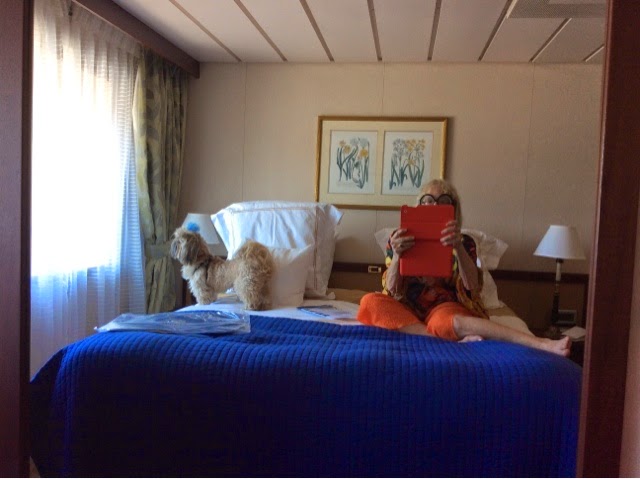 Today's excursion is up Mt. Etna, which is still very much alive. We set off along the Italian Mediterranean coast, which is breathtakingly beautiful. The cliffs rise steep and stark out of the sea, with houses and rows of lemon trees clinging precariously to the terraces which have been painstakingly hewn from the cliff face. The water is a thousand shades of aquamarine. The main crop here is lemons, and the area is known for its limoncello, a lemon liqueur. The drive is fabulous, and for once, I'm sitting on the scenic side of the bus.
Today's excursion is up Mt. Etna, which is still very much alive. We set off along the Italian Mediterranean coast, which is breathtakingly beautiful. The cliffs rise steep and stark out of the sea, with houses and rows of lemon trees clinging precariously to the terraces which have been painstakingly hewn from the cliff face. The water is a thousand shades of aquamarine. The main crop here is lemons, and the area is known for its limoncello, a lemon liqueur. The drive is fabulous, and for once, I'm sitting on the scenic side of the bus.Finally, we turn inland. Italians love Mt. Etna, our guides tells us, and call it La Signora. When it erupts there's no pyroclastic blast (as with Vesuvius) but rather, a flow of lava which is so slow that it can be diverted. Of course, the volcanic soil is rich and wonderful for agriculture, and there is ample water. Soon, we can see the top of the volcano, partially shrouded in heavy, black clouds and smoke. There's another storm coming.
 We ascend the slopes of the volcano, where the vegetation goes from wild chestnut trees on the lower slopes to flowering broom and then lichen. Finally, we reach the tourist stop halfway up the mountain. The bright buildings the the cable car that goes to the top of the volcano are set in the midst of the lava and ash from the 1992 eruption, which buried the original buildings. They're still there, our guide tells us, many feet below. The cable car isn't running, because the volcano is active. Also, the weather is deteriorating rather quickly. There's thunder, and the occasional fork of lightening. This isn't at all to Xingxing's taste, but he pads obediently after me through the ash.
We ascend the slopes of the volcano, where the vegetation goes from wild chestnut trees on the lower slopes to flowering broom and then lichen. Finally, we reach the tourist stop halfway up the mountain. The bright buildings the the cable car that goes to the top of the volcano are set in the midst of the lava and ash from the 1992 eruption, which buried the original buildings. They're still there, our guide tells us, many feet below. The cable car isn't running, because the volcano is active. Also, the weather is deteriorating rather quickly. There's thunder, and the occasional fork of lightening. This isn't at all to Xingxing's taste, but he pads obediently after me through the ash. The gathering storm adds to the eerie, surreal feel of the landscape. You definitely know you're in the vicinity of a live volcano. It's an odd, humbling feeling. We wander across the mountains of ash, some of it an odd, orange color from the metal deposits in the volcano.
The gathering storm adds to the eerie, surreal feel of the landscape. You definitely know you're in the vicinity of a live volcano. It's an odd, humbling feeling. We wander across the mountains of ash, some of it an odd, orange color from the metal deposits in the volcano.We're actually quite lucky with the weather. A few hailstones fall, but by that time we're all back in the bus and on the way down. An amazing sight, and awesome experience. I'm thinking it totally makes up for yesterday.








































